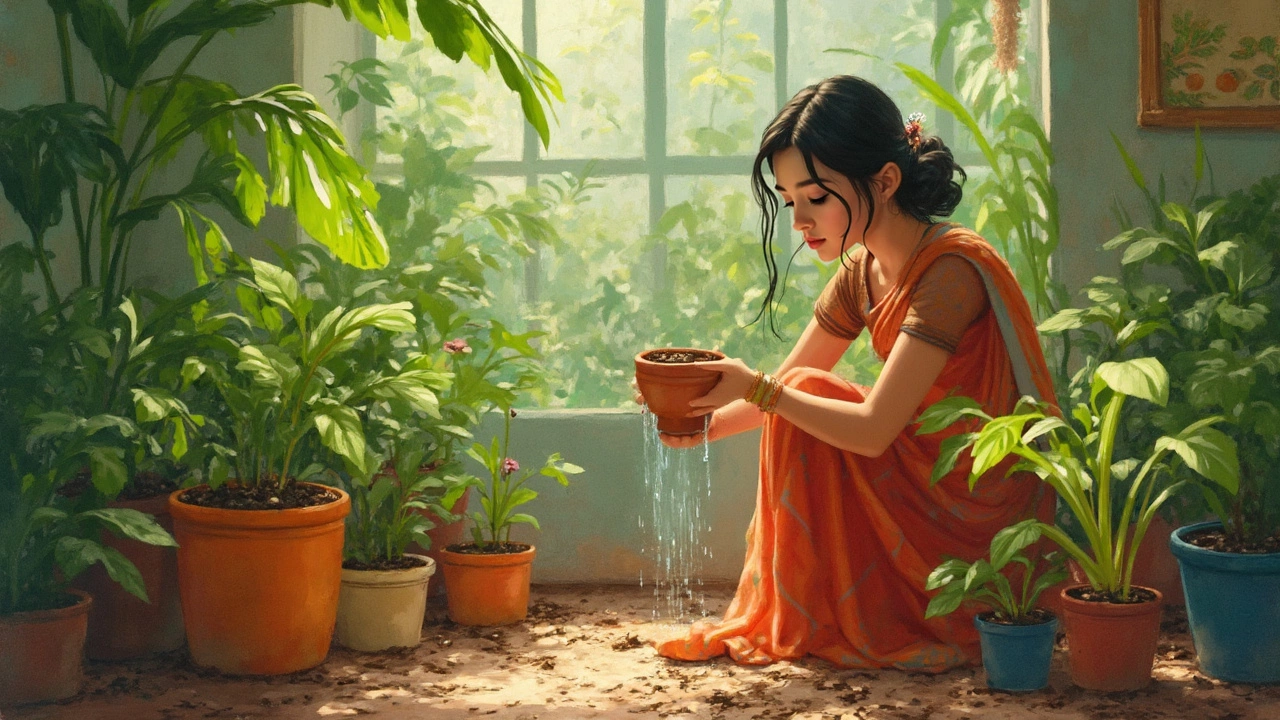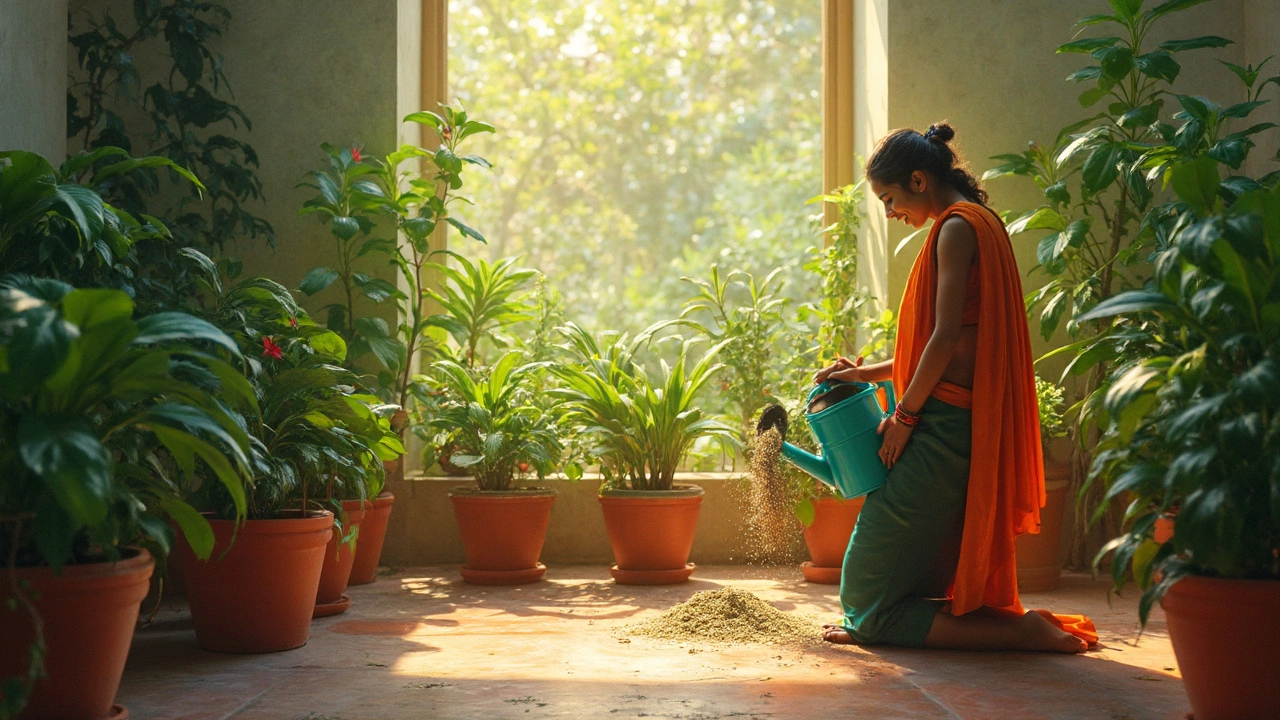Indoor Plants Care: Easy Ways to Keep Your Houseplants Happy
Ever wondered why some houseplants look droopy while others stay lush? It usually comes down to three things: water, light and humidity. Get these right and most indoor greens will thrive without drama.
Watering: How Much and When?
Water is the biggest mistake most beginners make. Too much turns roots soggy; too little leaves them thirsty. The simple trick is to feel the top inch of soil. If it feels dry, water until you see a little drip from the pot’s bottom. For larger pots, check deeper – push a finger two inches in. If it’s still moist, wait another day.
Another quick test is to look at the leaves. Curling, brown tips usually mean you’re over‑watering, while wilting and drooping points to a lack of water. Notice how quickly the soil dries after a watering? That tells you how often to repeat the routine – usually once a week for most tropical houseplants, but cactus and succulents need far less.
Light: Find the Right Spot
Indoor plants love bright, indirect light. A windowsill that gets morning sun works for most foliage, but harsh afternoon rays can scorch leaves. If a plant’s leaves turn yellow or the stems stretch thin and leggy, it’s not getting enough light. Rotate the pot a quarter turn every few days so all sides receive equal exposure.
When natural light is limited, a cheap LED grow light can fill the gap. Keep the light about six inches above the foliage and run it for 12‑14 hours a day during winter months.
Humidity is often overlooked in Indian homes, especially when air‑conditioning or heating is on. Many tropical houseplants, like pothos or ferns, enjoy 50‑60% humidity. If the air feels dry, place a tray of water and pebbles under the pot or mist the leaves once a week. Contrary to popular belief, over‑misting can lead to fungal issues, so keep the leaves just lightly damp.
Soil matters too. Use a well‑draining mix – a blend of potting compost, perlite and a bit of coconut coir works for most indoor plants. Avoid heavy garden soil that holds water; it’s a recipe for root rot.
Fertilizing keeps growth steady. A balanced liquid fertilizer at half strength once a month during the growing season (spring‑summer) is enough. Skip feeding in winter when most plants slow down.
When leaves develop spots, yellowing or pests, act fast. A gentle wipe with a damp cloth removes dust and many pests. For stubborn insects, a spray of diluted neem oil works well without harming the plant.
Finally, give your plant room to grow. Every 12‑18 months, check if the roots are crowding the pot. If you see roots circling the bottom, it’s time to repot into a slightly larger container with fresh soil.
Putting these steps together – check soil moisture, give the right light, maintain moderate humidity, feed lightly and watch for pests – turns a struggling indoor garden into a thriving green corner. Start with one easy plant, follow the basics, and soon you’ll have confidence to expand your collection. Happy planting!
Spot Overwatering vs Underwatering: Your Indoor Plant's Vital Signs
Not sure if your plant is thirsty or drowning? This guide will help you read the signs of overwatering and underwatering, ensuring your indoor jungle thrives. Understand the symptoms, investigate potential causes, and learn practical tips to balance moisture for healthy plant growth. You’ll discover how simple it is to connect with your plants and provide the care they need to flourish. With a little attention and observation, you'll become the go-to plant doctor in your home.
Adding the Right Ingredients to Water for Thriving Indoor Plants
Keeping indoor plants healthy often goes beyond just regular watering. Adding the right ingredients to water can boost plant growth and health. This article explores useful additives like natural fertilizers and their benefits, along with practical tips to keep your green friends flourishing. Discover simple ways to enhance your plant care routine.
Optimal Times for Watering Indoor Plants: Night Vs. Day
Deciding whether to water your indoor plants during the day or at night can impact their health and growth. This article delves into the advantages and disadvantages of both timings, helping you make an informed choice. Learn about plant water needs, environmental factors, and tips to keep your greenery thriving. Explore how timing affects plant absorption and discover the best practices for different plant types. Equip yourself with the knowledge to nurture your indoor oasis effectively.
About
Indoor Plant Care
Latest Posts


How Often Should I Water Houseplants? Practical Indoor Plant Care Tips
By Alden Thorne Jun 2, 2025

Does Apple Cider Vinegar Work as a Natural Insecticide? Facts, Recipes & Results
By Alden Thorne Jun 26, 2025



